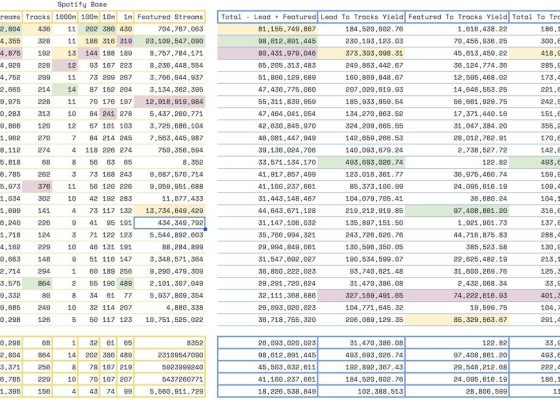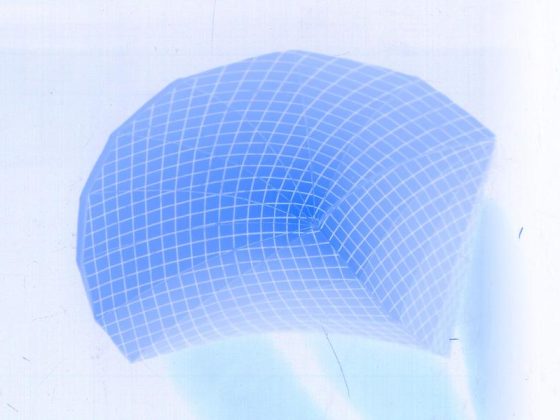From professional sports leagues to kidney care and digital commerce, Google Cloud databases enable organizations to develop radically transformative experiences for their users. The stories of how Google Cloud Databases have helped Box, Credit Karma, Davita, Forbes, MLB, and PLAID build data-driven applications is truly remarkable – from unifying data lifecycles for intelligent applications, to reducing, and even eliminating operational burden. Here are some of the key stories that customers shared at Google Cloud Next.
Box modernizes its NoSQL databases with zero downtime with Bigtable
A content cloud, Box enables users to securely create, share, co-edit, and retain their content online. While moving its core infrastructure from on-premises data centers to the cloud, Box chose to migrate its NoSQL infrastructure to Cloud Bigtable. To fulfill the company’s user request needs, the NoSQL infrastructure has latency requirements measured in tens of milliseconds. “File metadata like location, size, and more, are stored in a NoSQL table and accessed at every download. This table is about 150 terabytes in size and spans over 600 billion rows. Hosting this on Bigtable removes the operational burden of infrastructure management. Using Bigtable, Box gains automatic replication with eventual consistency, an HBase-compliant library, and managed backup and restore features to support critical data.” Axatha Jayadev Jalimarada, Staff Software Engineer at Box, was enthusiastic about these Bigtable benefits, “We no longer need manual interventions by SREs to scale our clusters, and that’s been a huge operational relief. We see around 80 millisecond latencies to Bigtable from our on-prem services. We see sub-20 millisecond latencies from our Google Cloud resident services, especially when the Bigtable cluster is in the same region. Finally, most of our big NoSQL use cases have been migrated to Bigtable and I’m happy to report that some have been successfully running for over a year now.”
From our partners:
Axatha Jayadev Jalimarada walks through “how Box modernized their NoSQL databases with minimal effort and downtime” with Jordan Hambleton, Bigtable Solutions Architect at Google Cloud.
Credit Karma deploys models faster with Cloud Bigtable and BigQuery
Credit Karma, a consumer technology platform helping consumers in the US, UK and Canada make financial progress, is reliant on its data models and systems to deliver a personalized experience for its nearly 130 million members. Given its scale, Credit Karma recognized the need to cater to the growing volume, complexity, and speed of data, and began moving its technology stack to Google Cloud in 2016.
Using Cloud Bigtable and BigQuery, Credit Karma registered a 7x increase in the number of pre-migration experiments, and began deploying 700 models/week compared to 10 per quarter. Additionally, Credit Karma was able to push recommendations through its modeling scoring service built on a reverse extract, transform, load, (ETL) process on BigQuery, Cloud Bigtable and Google Kubernetes Engine. Powering Credit karma’s recommendations are machine learning models at scale — the team runs about 58 billion model predictions each day.
Looking to learn “what’s next for engineers”? Check out the conversation between Scott Wong, and Andi Gutmans, General Manager and Vice President of Engineering for Databases at Google.
DaVita leverages Spanner and BigQuery to centralize health data and analytics for clinician enablement
As a leading global kidney care company, DaVita spans the gamut of kidney care from chronic kidney disease to transplants. As part of its digital transformation strategy, DaVita was looking to centralize all electronic health records (EHRs) and related care activities into a single system that would not only embed work flows, but also save clinicians time and enable them to focus on their core competencies. Jay Richardson, VP, Application Development at DaVita, spoke to the magnitude of the task, “Creating a seamless, real-time data flow across 600,000 treatments on 200,000 patients and 45,000 clinicians was a tall engineering order.” The architecture was set up in Cloud Spanner housing all the EHRs and related-care activities, and BigQuery handling the analytics. Spanner change streams replicated data changes to BigQuery with a 75 percent reduction in time for replication–from 60 to 15 seconds-enabling both, simplification of the integration process, as well as, a highly scalable solution. DaVita also gained deep, relevant, insights–about 200,000 a day–and full aggregation for key patient meds and labs data. This helps equip physicians with additional tools to care for their patients, without inundating them with numbers.
Jerene Yang, Senior Software Engineering Manager at Google Cloud, helps to “see the whole picture by unifying operational data with analytics” with Jay Richardson.
Forbes fires up digital transformation with Firestore
A leading media and information company, Forbes is plugged into an ecosystem of about 140 million—employees, contributors, and readers—across the globe. It recently underwent a successful digital transformation effort to support its rapidly scaling business. This included a swift, six-month migration to Google Cloud, and integrating with the full suite of Google Cloud products from BigQuery to Firestore—a NoSQL document database. Speaking of Firestore, Vadim Supitskiy, Chief Digital & Information Officer at Forbes, explained, “We love that it’s a managed service, we do not want to be in the business of managing databases. It has a flexible document model, which makes it very easy for developers to use and it integrates really, really, well with the products that GCP has to offer.” Firestore powers the Forbes insights and analytics platform to give its journalists and contributors comprehensive, real-time suggestions that help content creators author relevant content, and analytics to assess the performance of published articles. At the backend, Firestore seamlessly integrates with Firebase Auth, Google Kubernetes Engine, Cloud Functions, BigQuery, and Google Analytics, while reducing maintenance overheads. As a cloud-native database that requires no configuration or management, it’s cheap to store data in, and executes low-latency queries
Minh Nguyen, Senior Product Manager at Google cloud, discusses “serverless application development with a document database” with Vadim Supitskiy here.
MLB hits a home run by moving to Cloud SQL
When you think of Major League Baseball (MLB), you think of star players and home runs. But as Joseph Zirilli, senior software engineer at MLB explained, behind-the-scenes technology is critical to the game, whether it is the TV streaming service, or on-field technology to capture statistics data. And that’s a heavy lift, especially when MLB was running its player scouting and management system for player transactions on a legacy, on-premises database. This, in combination with the limitations of conventional licensing, was adversely impacting the business. The lack of in-house expertise in the legacy database, coupled with its small team size, made routine tasks challenging.
Having initiated the move to Google Cloud a few years ago, MLB was already using Cloud SQL for some of its newer products. It was also looking to standardize its relational database management system around PostgreSQL so it could build in-house expertise around a single database. They selected Cloud SQL which supported their needs, and also offered high availability and automation.
Today, with drastically improved database performance and automatic rightsizing of database instances, MLB is looking forward to keeping its operational costs low and hitting it out of the park for fan experience.
Sujatha Mandava, Director, Product Management, SQL Databases at Google Cloud, and Joseph Zirilli discuss “why now is the time to migrate your apps to managed databases”.
Major League Baseball trademarks and copyrights are used with permission of Major League Baseball. Visit MLB.com.
PLAID allies with AlloyDB to enhance the KARTE website and native app experience for customer engagement
PLAID, a Tokyo-based startup hosts KARTE, an engagement platform focused on customer experience that tracks the customer in real time, supports flexible interactions, and provides wide analytics functionality. To support hybrid transactional and analytical processing (HTAP) at scale, KARTE was using a combination of BigQuery, Bigtable, and Spanner in the backend. This enabled KARTE to process over 100,000 transactions per second, and store over 10 petabytes of data. Adding AlloyDB for PostgreSQL to the mix has provided KARTE with the ability to answer flexible analytical queries. In addition to the range of queries that KARTE can now handle, AlloyDB has brought in expanded capacity with low-latency analysis in a simplified system. As Yuki Makino, CTO at PLAID pointed out, “With the current (columnar) engine and AlloyDB performance is about 100 times faster than earlier.”
Yuki Makino, in conversation with Sandy Ghai, Product Manager at Google Cloud, says “goodbye, expensive legacy database, hello next-gen PostgreSQL database” here.
Implement a modern database strategy
Transformation hinges on new cloud database capabilities. Whether you want to increase your agility and pace of innovation, better manage your costs, or entirely shut down data centers, we can help you accelerate your move to cloud. From integration into a connected environment, to disruption-free migration, and automation to free up developers for creative work, Google Cloud databases offer unified, open, and intelligent building blocks to enable a modern database strategy.
Download the complimentary 2022 Gartner Magic Quadrant for Cloud Database Management Systems report.
Learn more about Google Cloud databases.
Learn why customers choose Google Cloud databases in this e-book.
By: Anita Kibunguchy-Grant (Head of Product Marketing, Databases)
Source: Google Cloud Blog
For enquiries, product placements, sponsorships, and collaborations, connect with us at [email protected]. We'd love to hear from you!
Our humans need coffee too! Your support is highly appreciated, thank you!








